Virtual Consultations Available! Start Your Journey Today.
Schedule A Consultation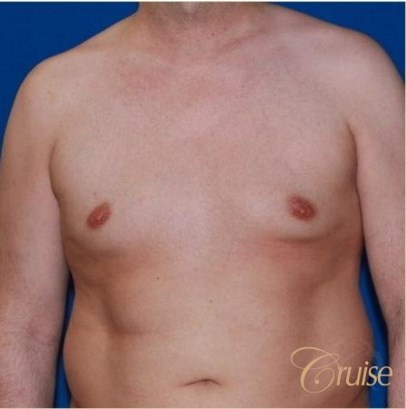
A classification system is only useful if it outlines a treatment plan.
Dr. Cruise
Breast tissue – under nipple/areola only
Nipple position – above border of pec. muscle
Lateral chest fold – tight, straight
Breast tissue – extends over chest fold
Nipple position – above border of pec. muscle
Lateral chest fold – tight, rounded
Breast tissue – extends over chest fold
Nipple position – 0 to 2 cm. below border of pec. muscle
Lateral chest fold – mild laxity, horizontal
Breast tissue – extends into axilla
Nipple position – >1.5 cm below border of pec. muscle
Lateral chest fold – small breast roll in front of arm pit
Breast tissue – extends into axilla
Nipple position – ≥ 2 cm below border of pec. muscle
Lateral chest fold – breast roll extends to the back of arm pit
Breast tissue – extends into axilla
Nipple position – ≥ 2cm below border of pec. muscle
Lateral chest fold – breast roll extends around to back
Type 4 Gynecomastia has breast tissue that extends into arm pit region similar to type 3. The major difference is that there is significant excess skin that causes the horizontal chest fold to extend into arm pit creating a breast roll. Proper assessment requires that you take into consideration that removing the gynecomastia tissue will cause “deflation”. Evaluation requires knowing how much skin will be present after tissue removal. Tightening this skin is often required to achieve long term, masculine chest results.
Unfortunately, the clinical definition for optimal results is virtually non-existent; even in plastic surgery literature. This is why it was essential for Dr. Cruise to include it as part of the Cruise Classification System. A classification system is only useful if it identifies where you are and where you need to go. The first part of the classification system identifies 6 basic types of enlarged breasts based on where you are. This next part of the system identifies where you need to go. It is true, different men have different goals. This is particularly true with Type 4 Gynecomastia. However, Dr. Cruise’s has identified eight fundamental aspects of the male upper chest that need to be evaluated in order to achieve optimal results. Page down to see the eight components that define a masculine chest.
“Achieving optimal results and avoiding complications requires both expertise and a plan”
Dr. Cruise

Ideally, there should not be any fat pockets. There are three common fat pockets that need to be evaluated and removed if present:
Type 4 Gynecomastia patients are often in good physical shape but have significant excess chest and arm pit skin laxity. This physical condition allows them the opportunity for a youthful, masculine chest that they can be proud of.
While type 5 and 6 patients have significant issues that need to be overcome, Type 4 typically just requires proper nipple placement and a tight skin envelop. As one of the top gynecomastia surgeons in the U.S., Dr. Cruise uses his expertise to create a sculpted arm pit with a well defined hollow at its apex. He then flanks the areas to define borders of the pec. major in front and the latissimus dorsi in back. This not only shapes the chest but gives a powerful, well defined V shape to the upper body. Typically, this can only be achieved with the longer, chest lift incision as opposed to the shorter super extended superior incision. The techniques explained here are likely not practiced by doctors who perform just a few male breast reduction surgeries per year. A great deal of knowledge, skill, and experience is necessary to properly execute this type of surgical plan.
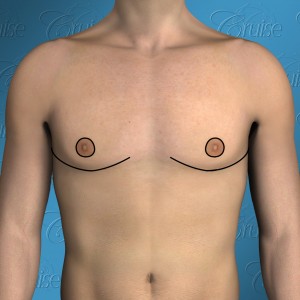
Chest Tightening with One of the Following:
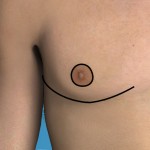 This technique is also referred to as Pedicle Gynecomastia. It is the most predictable way to create a truly youthful chest that will last virtually forever.
This technique is also referred to as Pedicle Gynecomastia. It is the most predictable way to create a truly youthful chest that will last virtually forever.
It involves removing excess skin by leaving a well hidden incision directly in the chest fold. The nipple never leaves the body, maintaining its own blood and nerve supply. This makes for a much easier recovery. Its biggest limitation is with significant amounts of glandular tissue.
 The best option for Type 4 requires a chest lift incision that removes a swath of skin from the medial chest into the arm pit. It also re-positions the nipple/areola exactly where you want it with exactly the chest thickness you want. While this may seem like a long incision, it is actually very well hidden with time as it falls into the nature chest fold crease. When placed correctly, the incision replaces the rounded, feminine shape of the chest to one that is straight, well defined, and follows the margin of the pec. major muscle creating a much more masculine look.
The best option for Type 4 requires a chest lift incision that removes a swath of skin from the medial chest into the arm pit. It also re-positions the nipple/areola exactly where you want it with exactly the chest thickness you want. While this may seem like a long incision, it is actually very well hidden with time as it falls into the nature chest fold crease. When placed correctly, the incision replaces the rounded, feminine shape of the chest to one that is straight, well defined, and follows the margin of the pec. major muscle creating a much more masculine look.
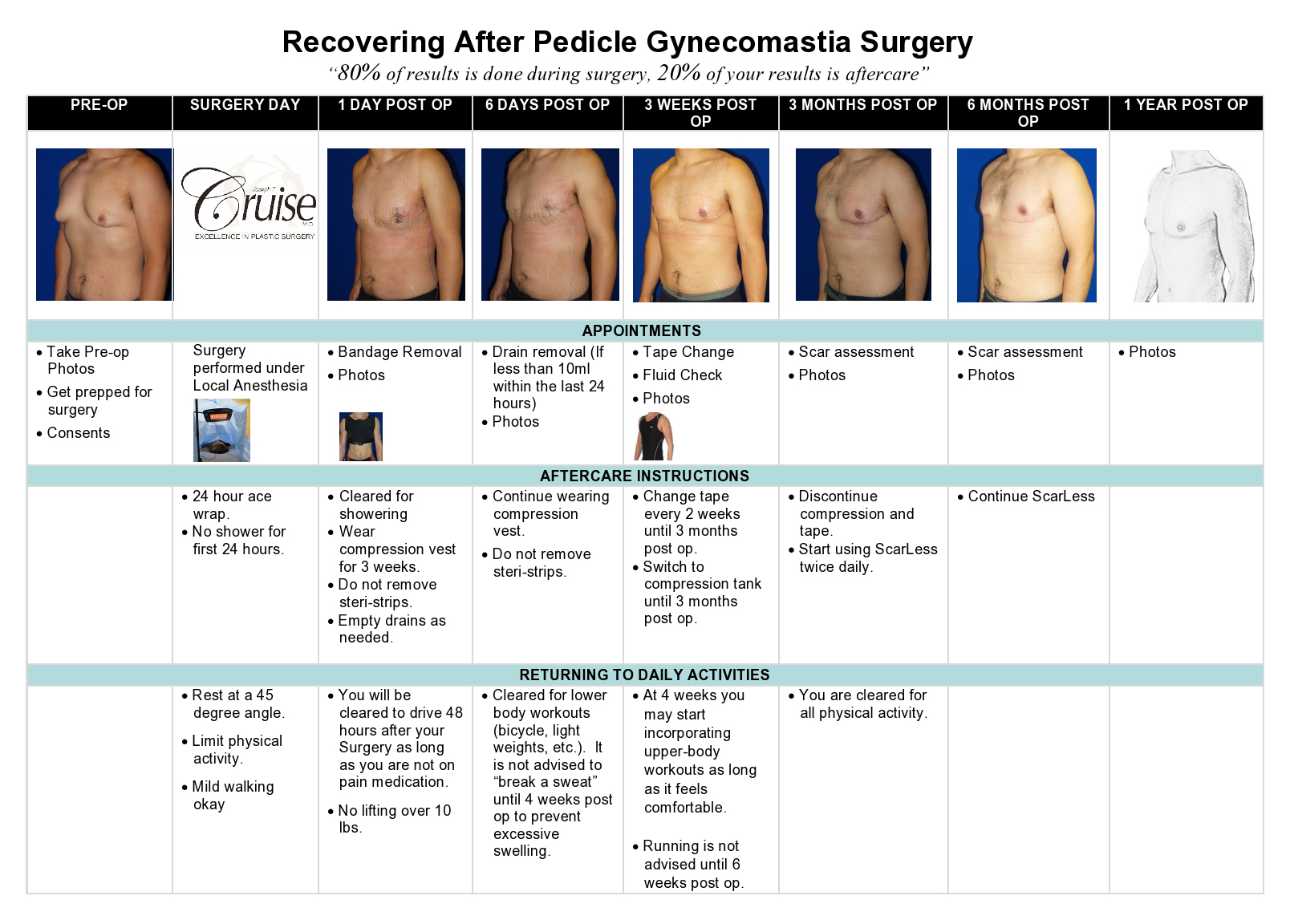
View our gallery of gynecomastia before and after photos to see the results from Type 4 Gynecomastia surgery. Remember each patient is unique and results will vary from person to person.
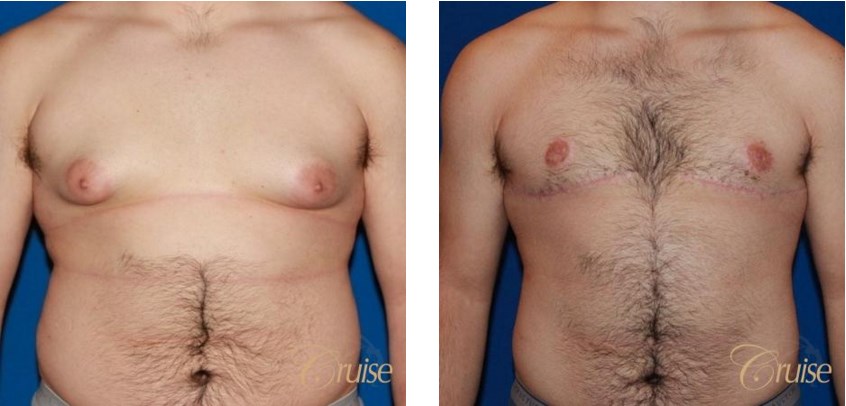
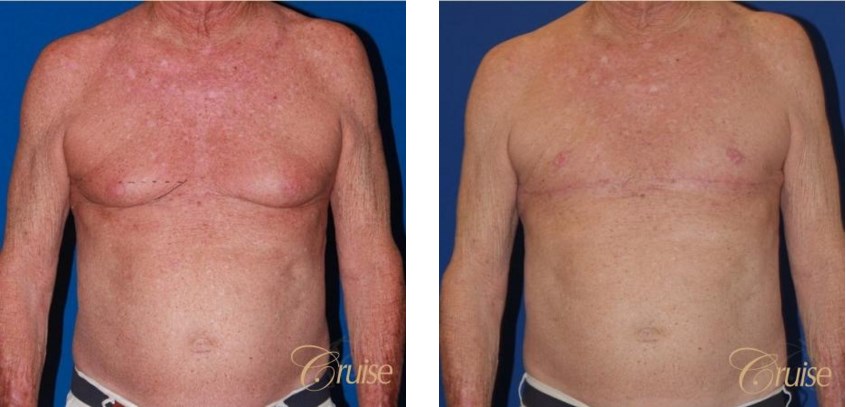
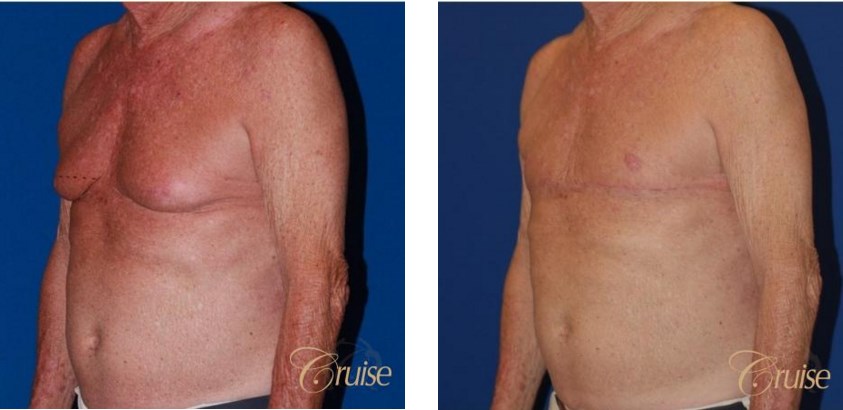
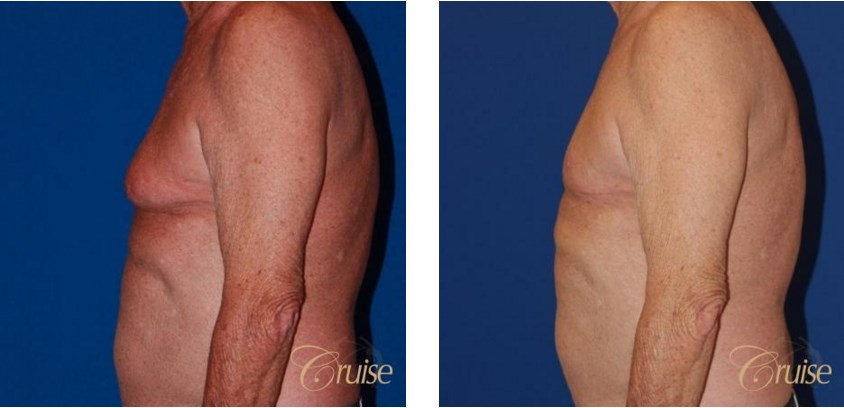
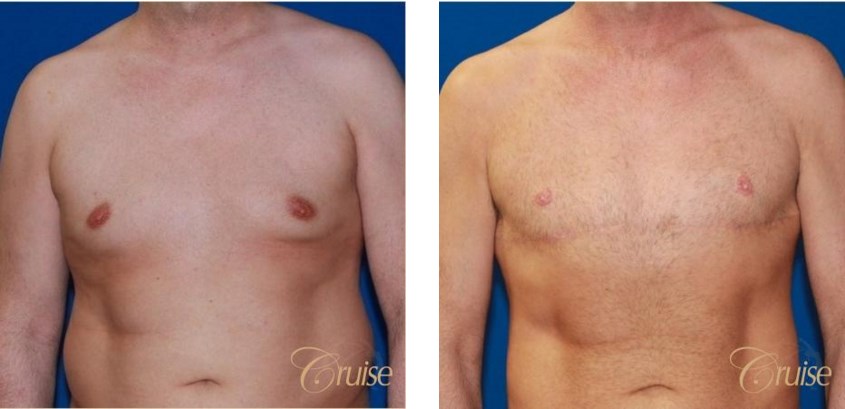
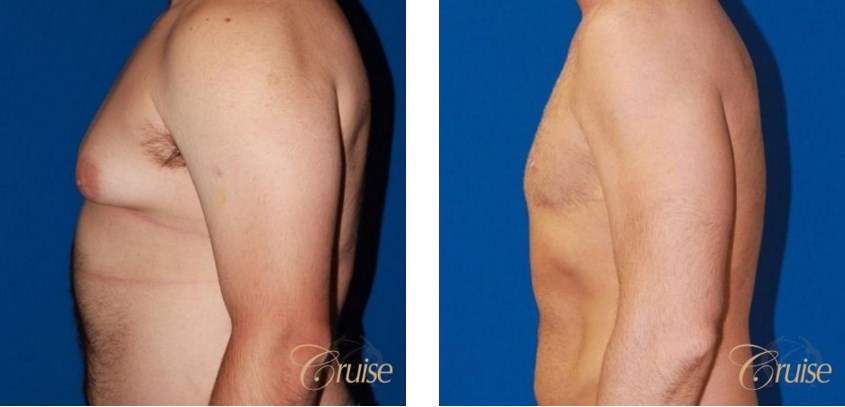
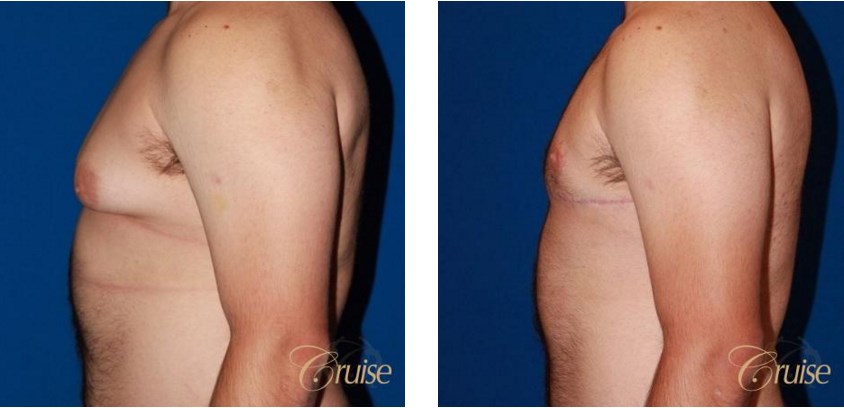
The pain and suffering associated with gynecomastia is unlike any other condition in plastic surgery and perhaps in all of medicine. The range of its impact is stunning. Some men (usually older) can be relatively unaffected while others (usually the younger) can be completely devastated and even suicidal.
Gynecomastia surgery is a tangible next step to resolve your man boobs. Dr. Cruise has performed over 5,000 gynecomastia surgeries and is ready to see you for a consultation. Call us at (949) 373-4867 or fill out our online contact form and you will be contacted with the next steps!
Gynecomastia surgery is a surgery that many men undergo to rid themselves of their man boobs. If you are interested in learning more about the surgical process or want to schedule a consultation with Dr. Cruise, please fill out our online contact form or call our office at 949-647-5440
